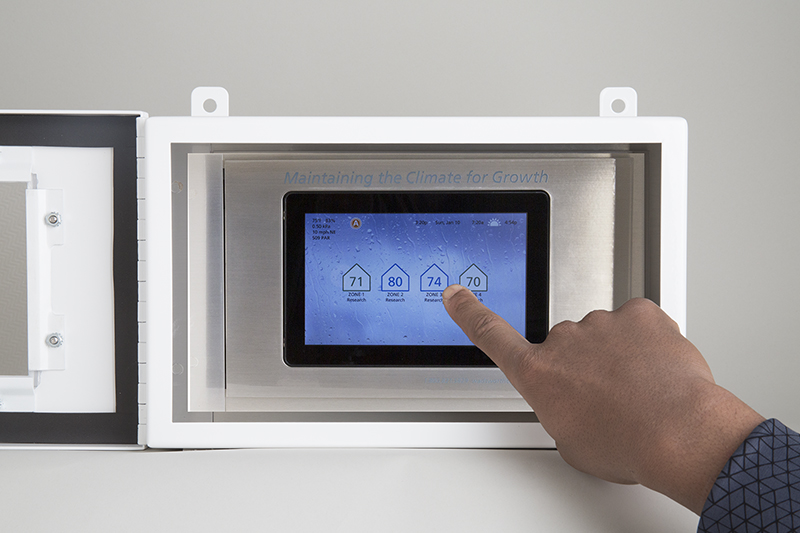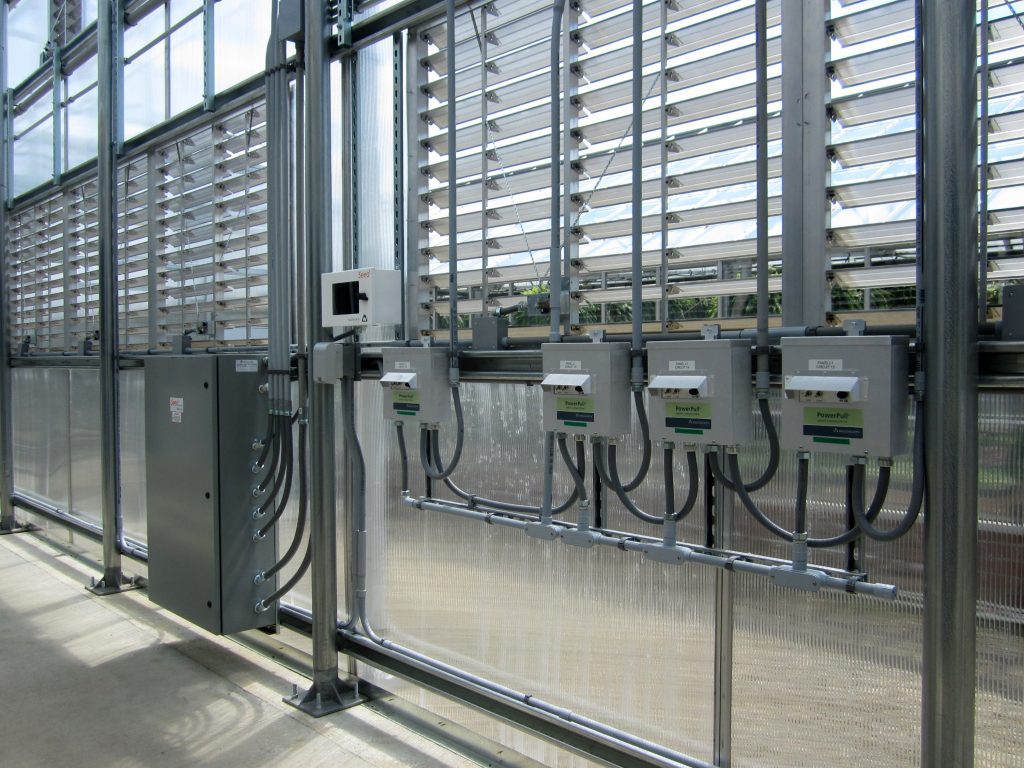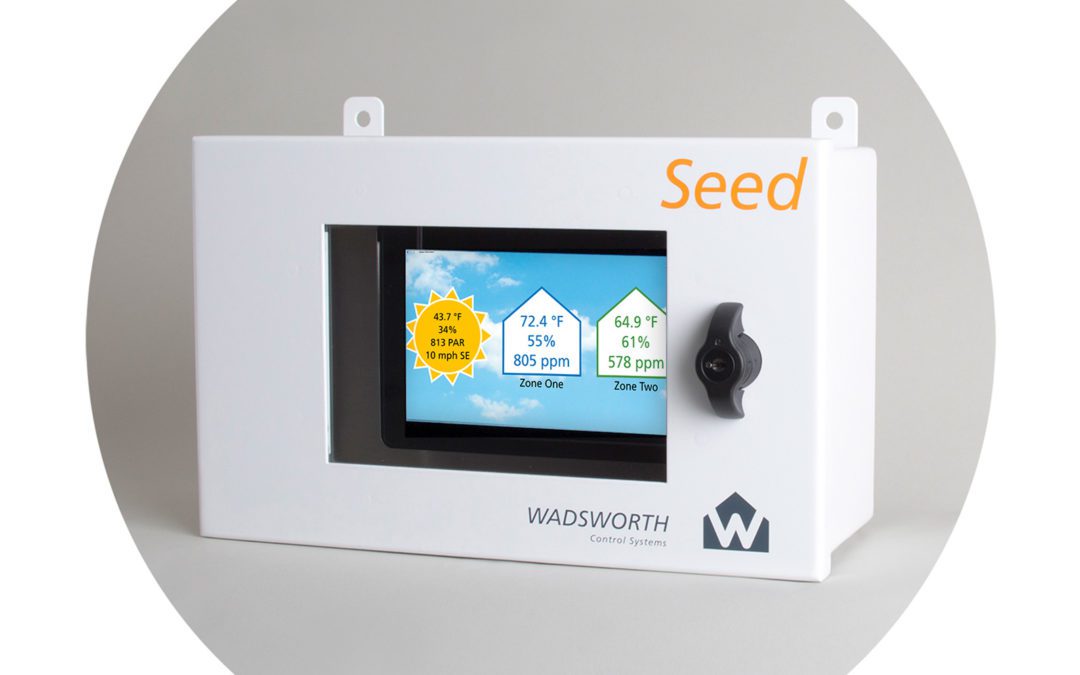NEWS & EVENTS
Wadsworth Control Systems’ newest control, Seed
***This article was originally published on Colorado Nursery and Greenhouse ***
By Julie Dean
Greenhouse automation was pioneered in Colorado, and Wadsworth Control Systems was the first company to design and build greenhouse automation products in the U.S. This contribution earned our father, George Dean, a place in the Horticultural Hall of Fame in 1992.
That set a high bar for the third generation of the Dean family. With the release of the Seed control, we believe we’ve made another significant contribution to the greenhouse industry. Seed isn’t the first touchscreen environmental control, but the user interface provides a substantial shift in control design. Seed makes the leap to visuals on-par with the iPhone. Its flexible design and increased capabilities set it apart from other environmental controls.

Novices use the intuitive graphics to immediately grasp climate management while knowledgeable agriculturists value the depth of functionality they need. Users can navigate from the home page to the zone screen to the detailed individual equipment screen in a matter of seconds. The zone screen shows each piece of equipment, its status and how the equipment will respond as conditions change. For example, a curtain’s Status may be 90% covered and the Why Message will show that it will remain covered until the temperature reaches 73º.
Seed manages a single zone to large, multiple zone projects, temperature, indoor and outdoor light levels, irrigation via soil moisture, frequency, accumulated solar intensity and Vapor Pressure Deficit. Relative humidity (RH) is controlled with a dehumidification setpoint override. The runtime option for equipment allows for flexibility on length of day. Curtain management is based on light intensity, programmed scheduling and allows for a variety of responses of degree covered and the pace of covering or uncovering. The differing uses of curtains: cooling, blackout for crop requirements or light pollution and heat retention are anticipated by the control settings. If the curtain is set to cover for cooling, the Why Code will display this as the reason for the current condition. If you select the curtain from the zone screen, it will navigate to the curtain screen.
Separate day and night heat retention settings allow growers to save on energy costs. Advanced sensing capabilities include dissolved oxygen (DO), electrical connectivity (EC), pH and differential pressure. Seed lighting equipment tracks Daily Light Integral (DLI), adding artificial light to the end of a period to reach desired levels.
Wadsworth enters default settings at the factory, including geographic location, which the control references for time-of-day settings and cardinal directions that guide equipment responses based on information provided by the external Weather Station.
Seed’s charting capabilities allow selection of all or specific equipment and sensor readings. Non-modulating equipment shows run time, sensors and modulating equipment display readings throughout the time period selected.
Seed has both a memory card and USB slot for software updates.
Seed Sphere, the companion software for the Seed control, shares the same friendly user interface as the control. Sphere offers expanded charting, including a greater time span, the ability to chart multiple zones, sensors and equipment on one chart and a user-defined Quick Report feature that saves analysis for future comparisons. A grower may create a Quick Report to look at upon arriving and just before leaving each day, displaying temperature, humidity and light.

One of the most sought after capabilities of Seed Sphere is remote access. Settings can be viewed and adjusted remotely, including graphing information. Sphere recognizes multiple Seed controls via the IP address so settings can be saved and pushed to other Seeds in the field. Settings can be stored for use with seasonal crops to repeat a successful schedule the following year. Data can be exported to spreadsheets and databases with comma separated values for further analysis, including tracking when equipment turns on and off and the direct effect on the crop.
Wadsworth Controls continues to expand Seed’s flexible design, capabilities and accessibility. Crop management has become more and more sophisticated, including the increased use of sensors to monitor plant health. As we’ve done from the beginning, we continue to keep a pulse on the industry and strive to anticipate growers’ needs.

